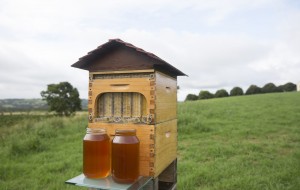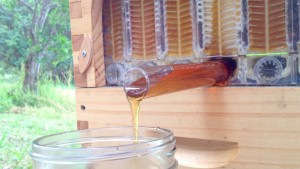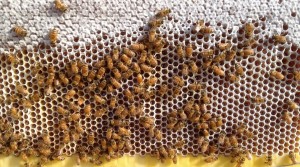What began as an Indegogo campaign to raise money for manufacturing a new beekeeping innovation has turned into a record breaking fundraiser, earning more than 10,000 percent of its original goal.
Two Australian men — father Stuart Anderson and son Cedar Anderson — have developed a new way to harvest honey from the comb. Their invention, the Flow Hive, is designed to simplify the beekeeping process.
Generations of beekeeping

The inventors have a family history of beekeeping; Stuart kept bees, and so did his father and brothers. Cedar is a third generation beekeeper and has kept bees since he was six years old.
The Andersons spent a decade coming up with the model for the Flow Hive. Cedar worked on different ways to change the shape of the frames and splitting the cells.
“One morning my dad came up with the idea of splitting them vertically,” Cedar said. “That was really the day Flow Hive was born.”
How it works
Related:
How to build a bee box for native pollinators
The Flow Hive’s frames are split vertically, making it different from a conventional hive. The comb’s matrices are partially complete hexagons, which are completed by the bees. The Flow frame is a partially formed comb cells that are completed by the bees. The bees then fill the cells with honey. Once the handle on the hive is turned, the split-cell technology forms channels in the comb through which the honey flows. During this process, the bees aren’t disturbed.
Once the honey has been drained, the handle is turned again to return the comb to its original position so that the bees can begin the process over again.
The Flow Hive is similar to a conventional hive in its construction; there is a brood box underneath and a super on top. The bees live and work in the Flow Hive just like they do in a conventional hive. The Flow frames have clear ends, so beekeepers can watch what’s going on inside. Up until it’s time to harvest honey, the Flow Hive is basically the same as a conventional hive.
The biggest difference between the Flow Hive and a conventional hive is the amount of work involved, according to the Andersons.
Traditional beekeeping involves cracking and pulling apart the hive to retrieve the honey. After putting on protective gear, beekeepers have to smoke the bees in order to sedate them, then crack the hive open, remove frames and brush the bees off of them. Then, the wax capping has to be cut off of the frames, the honey has to be filtered and the frames have to be cleaned.

The Andersons have reduced the work of beekeeping to turning a tap and watching the honey pour out of the hive.
“It makes keeping bees a much less daunting prospect, so we hope it will encourage more people to keep bees,” Stuart said.
Skeptical beekeepers
Traditional beekeepers may be skeptical of this new hive, questioning how the beekeeping process can be simplified. They may question how the honey can be extracted when it’s contained in the comb. They may also wonder how extracting honey can be reduced to only turning a tap and watching the honey pour out.
“We’ve always stressed that people new to the hobby have to know what they’re doing — both for the good of the bees and to get a good amount of honey,” Stuart said.
The Andersons don’t claim that more honey can be harvested from the Flow Hive, but their tests have shown that it has higher yields than a conventional hive.
“How much honey you get will depend on the conditions in your area, and those factors remain in play whichever beehive you’re using,” Stuart said.
For new apiarists

Stuart asserts that new or novice beekeepers will do well with the Flow Hive. When the Flow frames are in the hive, the bees do the work. They clean, so beekeepers don’t have to perform maintenance.
“The most difficult and time-consuming part of the process has always been the harvesting of the honey. The Flow Hive eliminates almost all of the effort involved.”
Cedar added that the more time beekeepers spend with their bees, the more likely they’ll recognize problems.
“Being more involved means beekeepers are more likely to spot and respond more quickly to any issues that come up, like pests and diseases that apply to any hive,” he said.
About the campaign
As of March 26, over $7,300,000 had been raised for the Flow Hive on Indiegogo. The goal, which pales in light of what has been raised, was $70,000.
The Flow Hive campaign had more than 19,000 funders as of March 26. The campaign continues until April 5.
The Complete Full Flow Hive costs $600. The kit consists of a base, brood box with frames, Flow super, 6 Flow frames, roof, tool and tubes. Other kits can also be purchased, such as the Flow Light 4 Frames with Box for $340 and the Full Flow 6 Frames with Box for $410.
Learn more
Learn more about the Flow Hive on the product’s website and by watching the product’s video.
Read about beekeeping:
- How to build a bee box for native pollinators Dec. 18, 2015
- Giving pollinators the right of way Dec. 17, 2015
- Who wants to be a beekeeper? Plan spring hives now Nov. 14, 2014
- Honey bee habitat: Ohio funding available in early 2015 Nov. 14, 2014
- Cost-share help for Ohio’s honeybees June 17, 2014
What’s your take on the Flow Hive? Share your opinions in the comments below.











